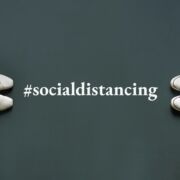Throughout the world, the COVID-19 pandemic continues to dramatically affect the lives of individuals. As our communities continue to reopen, many people are struggling to enter back into the workforce without any negative emotions.
When the World Health Organization (WHO) declared COVID-19 a pandemic, hundreds of millions of people were forced to lockdown, abruptly transition to working from home, or for those that did not have that option, lose their jobs entirely.
For months the future looked and felt uncertain for so many people, and in some respects it still does. Even with a large portion of the U.S. population receiving the COVID-19 vaccine, the fear of returning to work and potentially being exposed lingers.
As we all transition into this new normal, and as businesses start to bring back their employees, many individuals returning to work are struggling to feel safe. After more than a year of either not working, or working remotely, many employees are experiencing return-to-work anxiety coupled with stress at the thought of returning to an office setting. After all, for over a year, people have been repeatedly advised how deadly this virus is and how important it is to social distance. The thought of being close to others is terrifying for some individuals. Employees are inquiring as to what steps their employers are taking to keep them safe as they transition back to work amid a pandemic? We’ve compiled some information to help both employees and employers as we ease back into the workplace.
What is the Risk of COVID-19 Contact in the Workplace?
The risk of exposure to COVID-19 depends on the likelihood of coming into prolonged, close contact with others, having frequent physical interaction with others who may be infected with the virus, as well as coming into contact with contaminated surfaces and objects.
Are There Preventative Measures a Person Can Take to Avoid Exposure?
Many employers are seeking the support of an occupational health and safety advisor to carry out a rapid risk assessment. This is used for determining their staff’s exposure risk to implement preventative measures. Before returning to work, verify what, if any, preventative measures your employer has created.
The WHO has created key measures that all employers should be implementing regardless of the industry. They include frequent hand-washing, disinfecting stations with alcohol-based hand sanitizer, respiratory hygiene (covering coughs, physical distancing, wearing face coverings, regular environmental cleaning, and disinfection, and limiting unnecessary travel). Employers should create and implement clear policies, training, and education for all staff members to inform them of COVID-19 protocols. Additionally, employers must encourage unwell workers or anyone who develops symptoms to stay home, self-isolate, and contact a medical professional immediately. Providing employees with COVID-19 information such as testing centers is a great way to keep employees informed.
The Rights, Duties, and Responsibilities of Employers and Employees
Employers, workers, and their organizations should strive to collaborate with health authorities to help prevent and control COVID-19. Employers should implement measures that prevent and mitigate exposures at the workplace while also providing personal protective equipment determined necessary through the risk assessment. To protect workers at higher risk such as those ages 60 and over, or those with underlying medical conditions, special measures should be taken.
Workers must follow the measures for occupational safety and health to help control the spread of COVID within the workplace. Workers have the right to remove themselves from any work situation that presents an imminent and serious danger to their life or health and must be protected from any unseemly consequences.
Tips to Overcome Return-to-Work Anxiety
Plan Ahead. As you transition back to work, finding some control over the uncertainty can help ease your anxiety. These can be simple things such as revisiting your work wardrobe, prepping your lunch, or organizing any work-related items.
Find the Good. This transition can be nerve-wracking, but do your best to seek the good in returning to work to help boost hope and optimism which in turn can help quiet your worry and anxiety. Think about the coworkers that you have missed or the customer’s smiles that brighten your day.
Talk About It. Find your person and vent away or start utilizing a journal. Expressing our feelings is a great way to help ease our worries and anxieties about what we are feeling. It is easy to get lost in our thoughts and emotions, so we need to make time to express ourselves. Remember your feelings matter. Feel those feelings, but find a way to release them and not be consumed by them.
As the world seeks some normalcy, many people are feeling anxious and uncomfortable to return to anything. Many individuals are returning to work full-time, forced to be near people – people they have been told to avoid for over a year. It is no wonder so many are consumed with negative emotions as they transition back to the workforce. Anxiety and stress are normal reactions to heavy situations. It is important to find outlets to help ease those stresses and worries such as knowing your rights as an employee and asking the right questions. Your safety within the workplace is vital and a requirement. When employers and employees work together to find measures that keep each person sane and safe, it creates a workspace that is much easier to come back to. If you are struggling with negative emotions due to COVID, reach out to Achieve Medical Concierge today. Call today (619) 393-5871.



